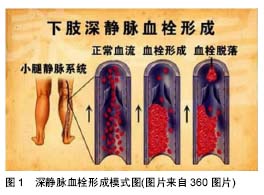| [1] Bono CM, Watters WC 3rd, Heggeness MH, et al. An evi-dence-based clinical guideline for the use of antithrombotictherapies in spine surgery. Spine J. 2009;9(12): 1046-1051.[2] 鲁宁.多重血栓预防方案在髋关节置换中应用的相关研究 ——基于危险因素多元回归分析、多重血栓预防方案运用和血清炎性因子在血栓与非血栓病人中的测定[D].昆明医科大学2012.[3] Sansone JM,del Rio AM,Anderson PA.The prevalence of and s PE cificrisk factors for venous thromboembolic disease following elective spinesurgeryJ Bone Joint Surg Am.2010;92: 304-313.[4] Yang SD, Ding WY, Yang DL, et al. Prevalence and Risk Factors of Deep Vein Thrombosis in,Patients Undergoing Lumbar Interbody Fusion Surgery.Medicine.2015;94(48):e2205.[5] Raj D, Marshall RW. Prophylaxis against thromboembolismin spinal surgery. Arch Orthop Trauma Surg.2008;128(7): 1365-1371.[6] Zaw HM,Osborne IC,PE ttit PN,et al. Risk factors for venous thromboembolism in ortho PE dic surgery. Isr Med Assoc J.2002;4(11):1040-1042.[7] 马毅.脊柱手术后深静脉血栓预防的研究进展[J]. 中国脊柱脊髓杂志,2012,22(8):753-756.[8] 郑爽. D-二聚体与Wells评分联合对脊柱退行性变围手术期深静脉血栓栓塞症筛查作用的研究[D].吉林大学, 2014.[9] 方建江,李波,何旭娟,等. 血浆肌钙蛋白I、B型钠尿肽及D-二聚体检测在急性肺栓塞预后评估中的意义[J]. 中国呼吸与危重监护杂志, 2012, 11(1): 61-64.[10] 于峥嵘,李淳德,邑晓东,等. 脊柱手术后静脉血栓栓塞的预防[J].北京大学学报:医学版, 2011, 43(5): 661-665.[11] 喻瑶瑶,罗春梅. 脊柱术后深静脉血栓的预防进展[J].中华肺部疾病杂志:电子版,2014,7(3): 340-343.[12] 付梅. 应用抗栓袜和间歇下肢静脉气泵预防骨科术后下肢深静脉血栓形成的研究[D]. 同济大学, 2006.[13] Leon L,Rodriguez H,Tawk RG,et al. The prophylactic use ofinferior vena cava filters in patients undergoing high-risk spinalsurgery.Ann Vasc Surg.2005;19(3):442- 447.[14] Dazley JM,Wain R,Vellinga RM,et al.Prophylactic inferior ve-na cava filters prevent pulmonary embolisms in high-risk patientsundergoing major spinal surgery.J Spinal Disord Tech.2012,25(4):190-195.[15] 唐亮,丁健,朱洁,等.低分子肝素对脊柱脊髓术后预防下肢深静脉栓塞的临床疗效及安全性分析[J]. 中国矫形外科杂志, 2012, 20(3): 218-219.[16] 徐建杰,董志辉,张斌,等.低分子肝素对退变性腰椎后路手术术后伤口引流量的影响[J]. 现代中西医结合杂志, 2016, 25(4): 389-390, 397.[17] 刘云.脊髓损伤术后深静脉血栓预防的相关研究[D]. 广西医科大学,2012.[18] Lassen MR,Ageno W,Borris LC,et al.Rivaroxaban versus enoxaparinfor thromboprophylaxis after knee arthroplasty. N Engl J Med.2008;358(26): 2776-2786.[19] Kakkar AK,Brenner B,Dahl OE,et al.Extended duration rivaroxabanversus short-term enoxaparin for the prevention of venousthromboembolism after total hip arthroplasty: a double-blind,randomised controlled trial.Lancet. 2008; 372(9632):31-39.[20] 于守梅,王旭光,刘建青.利伐沙班对预防LDH术后双下肢深静脉血栓的临床观察[J]. 中国药物经济学,2012,(6):166-167.[21] 郝应文,蔡佳.利伐沙班对胸腰椎骨折患者术后静脉血栓栓塞的预防效果[J] .检验医学与临床,2013,10(19): 2560-2561.[22] Botticelli Investigators,Writing Committe,Buller H,et al. Efficacyand safety of the oral direct factor Xa inhibitor apixaban for symp-tomatic deep vein thrombosis.The Botticelli DVT dose-rangingstudy. J Thromb Haemost. 2008;6(8):1313-1318.[23] Lassen MR,Raskob GE,Gallus A,et al.Apixaban versus enoxapa-rin for thromboprophylaxis after knee replacement ( ADVANCE-2) :a randomised double-blind trial. Lancet. 2010;375 (9717):807-815.[24] Lassen MR,Gallus A,Raskob GE,et al. Apixaban versus enoxapa-rin for thromboprophylaxis after hip replacement.N Engl JMed.2010;363(26): 2487-2498.[25] Handschin AE, Trentz OA, Hoerstrup SP, et al.Effect of low molecular weight heparin(dalteparin) and fondaparinux (Arixtra) on human osteoblasts in vitro.Br J Surg.2005; 92(2):177-183.[26] 刘百海,李万胜,张金钟,等. 祛瘀通脉汤加足底按摩预防下肢手术后DVT临床观察[J].山东医药,2010,50(47) :92-93.[27] 刘志军,常峥,张宏波,等.活血溶栓汤预防人工髋关节置换术后DVT的临床研究[J].中医正骨,2010,22(11) :6-8.[28] 程华斌.丹参川芎嗪联合低分子肝素预防下肢骨折术后深静脉血栓形成的临床疗效[J].中国社区医师,2016,32(7):99-100.[29] 陈永国. 脊柱术后并发下肢静脉栓塞的风险及预防[J]. 长春中医药大学学报,2010,26(5): 750-752.[30] 张洪斌,杨佐明,李永民,等.脊柱外科病人围手术期血栓预防及相关因素分析[J].中国骨与关节损伤杂志,2009,24(8): 695-697.[31] 叶彤.骨科手术不同输液部位对下肢深静脉血栓形成的影响[J].齐鲁护理杂志,2011,17(17): 57-58.[32] 杜雪莲,刘凡,谭艳庆.护理干预对预防腰椎骨折术后深静脉血栓形成的临床研究[J].临床医学工程,2008,15(11):36-38.[33] 宁宁,陈海霞,陈忠兰.周期性充气加压预防骨科大手术后深静脉血栓形成的系统评价[J].中国循证医学杂志,2010,10(4): 471-475.[34] Ferree BA,Wright AM. Deep venous thrombosis following posterior lumbar spinal surgery.Spine.1993;18(8): 1079-1082.[35] 冯娴,崔丽娜,韩轶梅,等.下肢静脉泵在骨科术后预防深静脉血栓形成的应用研究及护理[J].护理研究,2010,24(30): 2793-2794.[36] Eriksson BI,Bauer KA,Lassen MR,et al.Fondapar inux compared with enoxaparin for the prevention of venous thromboembolism after hip-fracture surgery.N Engl J Med.2001; 345(18): 1298-1304.[37] Gerlach R,Raabe A,Beck J,et al.Postoperative nadroparin administration for prophylaxis of thromboembolic events is not associated with anincreased risk of hemorrhage after spinal surgery.Eur Spine J.2004;13(1): 9-13.[38] 曾小军,李安军.低分子肝素预防脊柱手术后血栓栓塞并发症的临床应用[J].中国药物与临床,2013,13(5): 667-669.[39] Slavik RS,Chan E,Gorman SK,et al. Daheparin versus enoxaparinfor venous thromboembolism prophylaxis in acute spinal cord injuryand major orthopedic trauma patients: ‘DETECT’trial. J Trauma.2007;62(5): 1075-1081.[40] Bryson J, Uzoigwe CE, Braybrooke J.Thromboprophylaxis in spinal surgery: a survey. J Orthop Surg Res. 2012;7:14.[41] Akeda K, Matsunaga H, Imanishi T, et al.Prevalence and Countermeasures for Venous Thromboembolic Diseases Associated With Spinal Surgery.Spine J. 2014;39:791-797. |
.jpg)



.jpg)